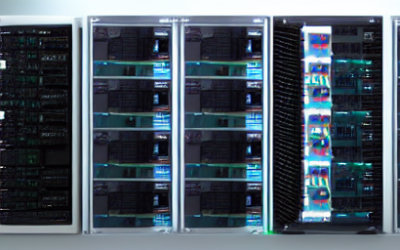In the dynamic landscape of small businesses, staying competitive requires efficient operations and a keen understanding of customer needs. One of the most impactful ways to achieve this is by leveraging the capabilities of Artificial Intelligence (AI) and automation.
Tech Blog
Tech Insights, Information, and InspirationOrder Management Systems (OMS)
Order management systems (OMS) are software solutions that are used to manage the entire order process from order entry to fulfillment and invoicing. These systems are designed to automate, streamline, and organize the entire order process. They can be used to manage customer orders, track inventory, process invoices, and generate reports.
Ecommerce Web Development
Ecommerce web development is the process of creating an online store or website that allows customers to purchase goods and services. This process involves designing, coding, programming, and hosting the website, along with marketing and customer service. This type of website typically includes a shopping cart, payment processing, and a content management system to manage the products and services being sold.
Guide to Journey Mapping
Journey mapping is a process of visualizing the customer experience. It involves mapping out the customer’s interactions with a product or service, from their initial discovery to their eventual decision to purchase. The journey map is then used to identify areas of improvement, opportunities for innovation and potential areas of customer frustration.
Google Analytics 4
Google Analytics 4 is the latest version of Google’s popular web analytics platform. This version of Google Analytics includes new features and capabilities, such as improved data management, machine learning-powered insights, and enhanced tracking capabilities. It also offers a more intuitive user interface and better integration with other Google products and services. Overall, Google Analytics 4 is intended to provide businesses with a more comprehensive and useful view of their website performance and user behavior.
Google Core Web Vitals
What is it?Google Core Web Vitals are a set of metrics that measure the performance and user experience of a website. These metrics are based on real-world user data and are designed to help webmasters and content creators understand how their websites are performing...
Bridging the Gap Between Business and Technology
Bridging the gap between business and technology is essential if an organization wants to remain competitive. The primary goal of bridging the gap between business and technology is to ensure that the technology is utilized to its fullest potential. This can be done by understanding the objectives of the business and how technology can help achieve those goals. It is important to ensure that the technology is used in a way that is cost-effective, reliable and scalable.
SEO Marketing
SEO marketing is a type of digital marketing that focuses on improving the ranking of a website on search engine results pages (SERPs). The goal of SEO marketing is to increase the quantity and quality of traffic to a website from search engines. This is typically achieved by implementing a combination of on-page and off-page optimization strategies, such as keyword research, link building, and content creation. By making a website more visible and relevant to search engines, SEO marketing can help attract more qualified leads and ultimately increase sales and revenue.
SEO Strategy for Small Business
SEO strategy for small businesses should focus on creating a strong online presence by optimizing content, improving local SEO, and expanding visibility.
Selecting Hosting Solutions for your Business
There are a variety of hosting solutions available for businesses, and the best option for your business will depend on your specific needs. For example, if you need a high-powered server for your website, you will need to select a hosting solution that can provide this type of server. If you have a small website, you may be able to get away with a less expensive hosting solution.
Get In Touch
UseTech Design, LLC
TROY, MI • BLOOMFIELD HILLS, MI
Call or text +1(734) 367-4100










